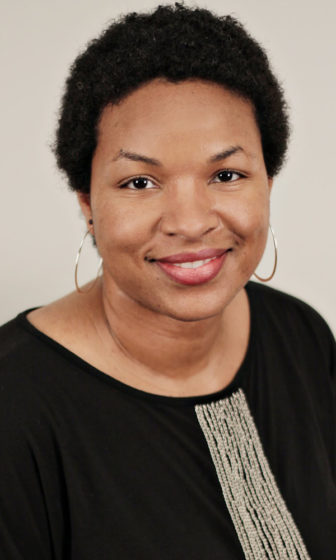“Why would my professor assume that I am on a scholarship?”
“After I told her I was offended by her comment, she said, ‘Calm down … I don’t see color.’”
“I am so tired of being the representative for my whole race.”
These statements are just a small sample of the personal accounts my students have expressed over the years. As a woman of color and one of a few minority professors at my institution, students feel comfortable sharing these experiences with me as we have a common experience.
Despite an increase in diversity training and sensitivity programs, the instances of racial microaggressions are on the rise. The college campus has always been a source of activism, civic awakening and identity development, but the current, strained political climate of the country has affected racial tensions, animosity and antagonism in an unnerving way. In light of this, faculty are no longer charged with solely being content experts in their respective disciplines; they also must be skilled in constructing learning environments that are welcoming and supportive of students from underrepresented groups.
What are microaggressions?

Keonya Booker
Keonya Booker
Although it seems like the term microaggression is a new buzzword, the expression was first defined in the 1970s by researchers who described these actions as “subtle, stunning, often automatic exchanges.” A more recent definition refers to microaggressions as “insults directed toward people of color, often automatically or unconsciously.” Racial microaggressions have been studied in many disciplines, such as medicine, business, engineering and counseling, where sample participants report instances of feeling their race or ethnic group is being pathologized or being made to feel invisible by their white counterparts.
As applied to post-secondary institutions, racial microaggressions occur when faculty and students unintentionally (or sometimes intentionally) devalue the experiences of minority students by using phrases, asking questions or making assumptions that seek to marginalize the recipient. On predominantly white campuses, this can result in a host of maladaptive problems such as school withdrawal, decreased academic performance and mental health decline.
Types of microaggressions
One of the most common examples of microaggressions is when students are singled out by faculty to represent the viewpoints of their entire racial or ethnic group. This can happen at any time during the semester, but is especially prevalent during the months when certain demographic groups are celebrated (e.g., National Hispanic Heritage Month). In what some faculty perceive as a well-meaning gesture to include the student in the larger class discussion, they inadvertently place unnecessary pressure on the student to “speak for” all members of their group.
Students may also report feeling a sense of invisibility, which occurs when faculty and classmates overlook them due to being one of the only non-white students in the course. In certain majors at predominantly white institutions, minority students will often be the sole student of color in the class. This type of microaggression is different than being a nonwilling “race representative,” as faculty are choosing not to integrate the members of marginalized groups into the discussion irrespective of the singular student’s choice in the matter. These students are not a part of the life and activity of the class, which can affect their sense of belonging with their instructor and peers.
I call this hidden visibility. For example, if a faculty member asks students to self-select into working discussion groups, it can be daunting for underrepresented students to find a welcoming place to connect with their peers. People “see” the student by virtue of their nonwhite appearance, but they are otherwise invisible as it relates to meaningful interactions with those in the class.
Finally, another type of microaggression occurs when faculty adjust their expectations of students’ performance based on their race. This can include lowering course requirements by assuming students cannot accomplish the assigned tasks. A “dumbing down” of the curriculum signifies that faculty believe students of color cannot demonstrate a high level of performance as necessitated by the objectives specified in the course. In a similar vein, if a faculty member has a viewpoint that indicates they do not believe students of color can succeed, they may even increase their expectations to a higher level. As a result, when students fail, the faculty member’s bias has been confirmed.
What faculty can do about it
While students may still battle racial microaggressions across campus, individual faculty members can implement specific strategies and techniques to facilitate a feeling of community with their students. First, faculty should be proactive about setting the stage early for civil interactions between students. This can include detailed information within the syllabus that specifies methods of communication and acknowledging an expectation that all interactions will be amicable, even during disagreements. Having a code of conduct or another type of policy about language usage, the role of active listening and the importance of civility will show students that their professor supports a positive learning environment.
Second, faculty should consider incorporating some of the tenets of culturally relevant teaching within their course. These strategies include infusing the curriculum with examples of diverse perspectives and theorists in the discipline, utilizing large-group discussion and small-group work with the intention of encouraging classroom community, and incorporating alternative forms of assessment that allow students to demonstrate mastery in nontraditional ways.
Finally, faculty must avail themselves of resources and tools to support their growth as a post-secondary instructor. All students deserve faculty who are advocates for safe psychological spaces. For students of color, who can experience unwelcoming and even hostile learning environments, faculty must be willing to learn specific methods of instruction and community building that will encourage their success.
As teachers, we are expected to maintain professional currency by attending conferences and enrolling in training experiences for our content areas. In the same way that we seek out opportunities to enrich our research impact in our respective disciplines, we should consider supplementing that work by acquiring instructional tools that can support the growth and development of underrepresented groups of students.
Keonya Booker is an assistant professor of teacher education at the College of Charleston. She studies school belonging and academic achievement in adolescence.






























